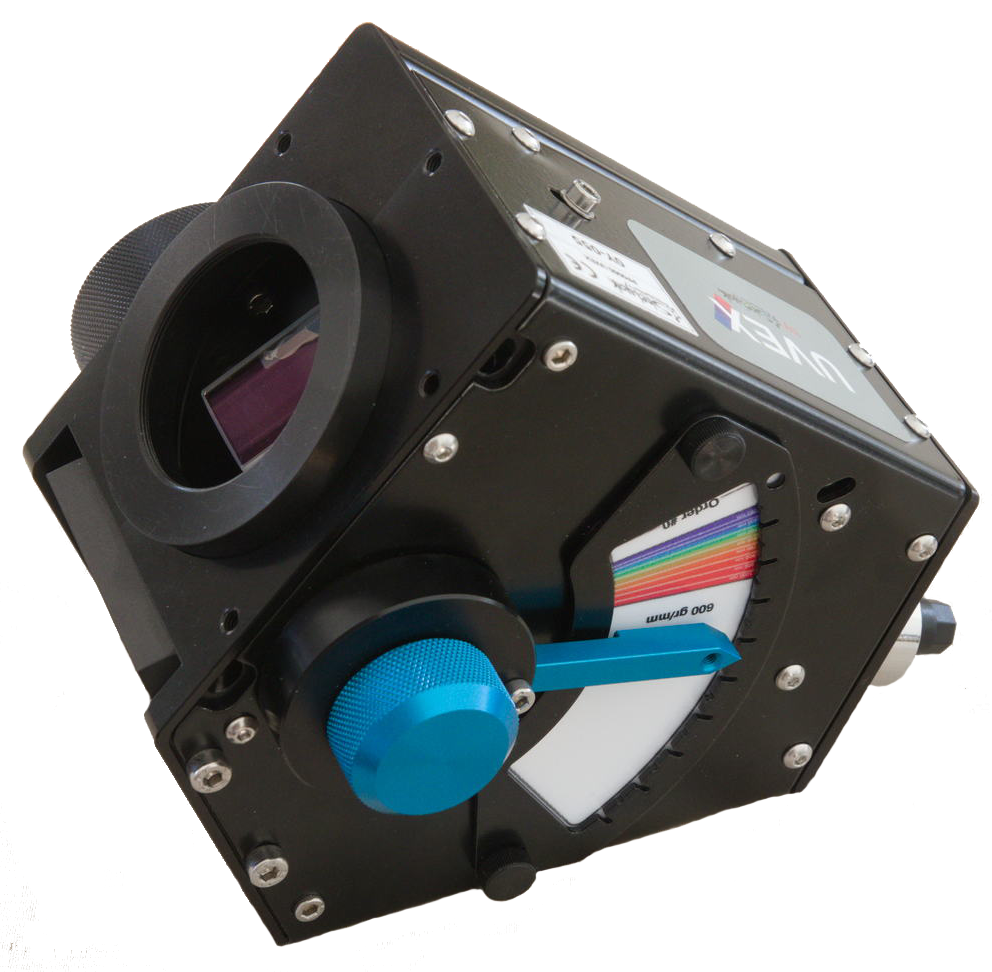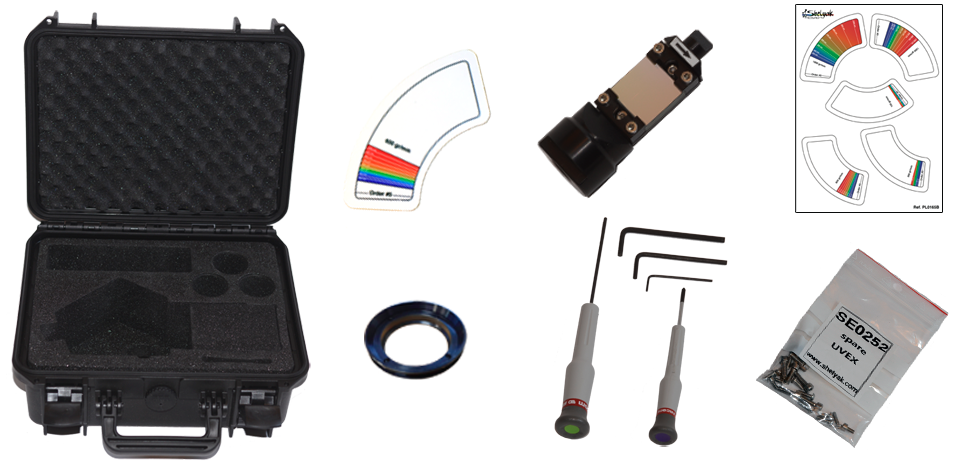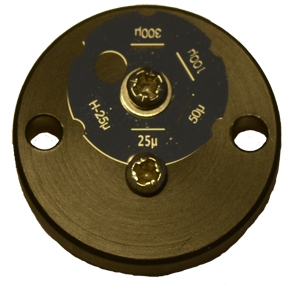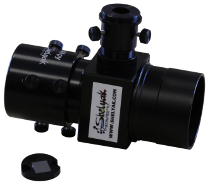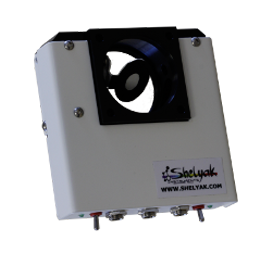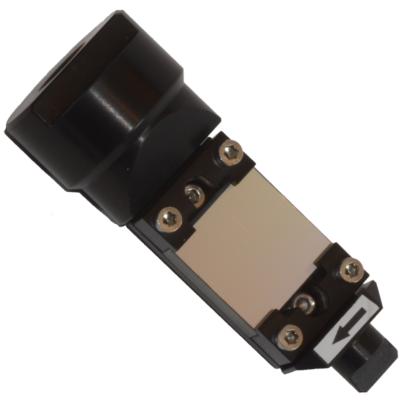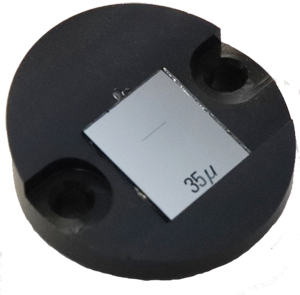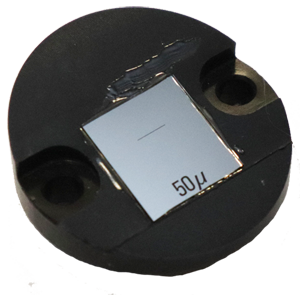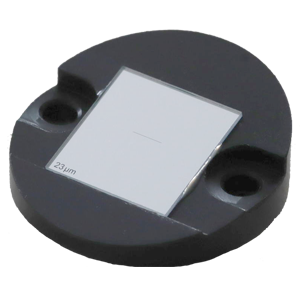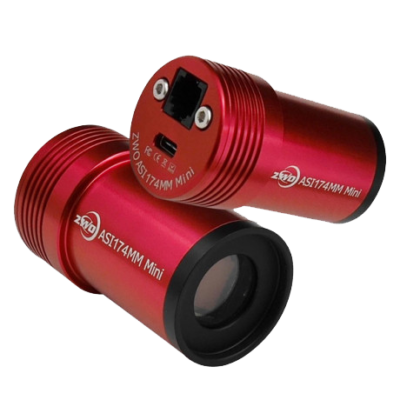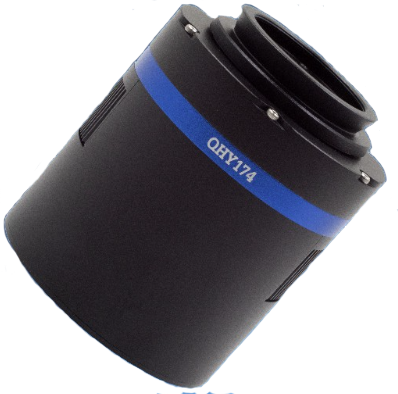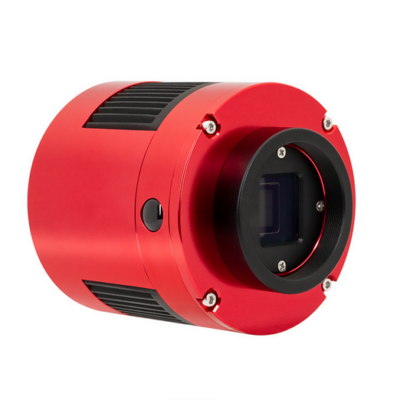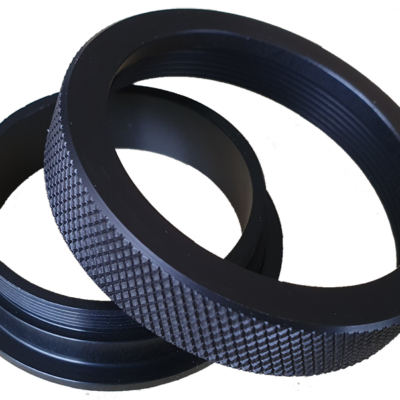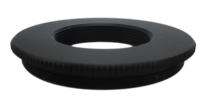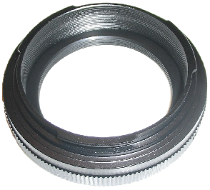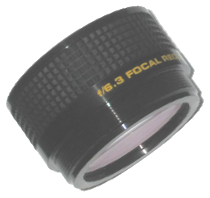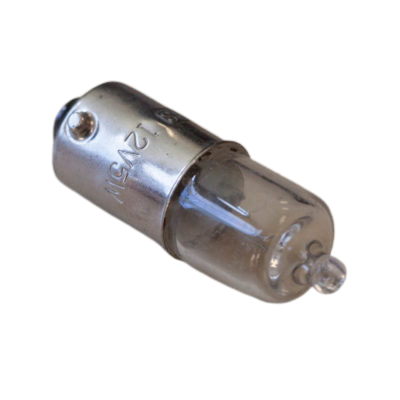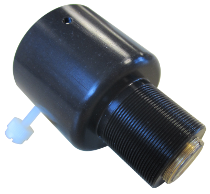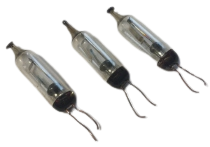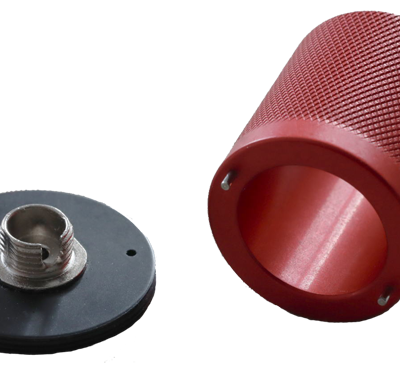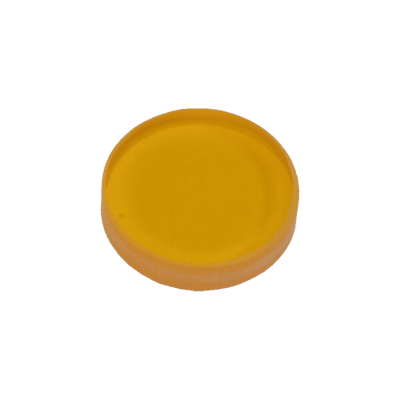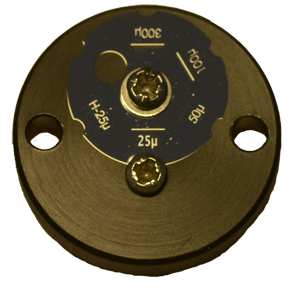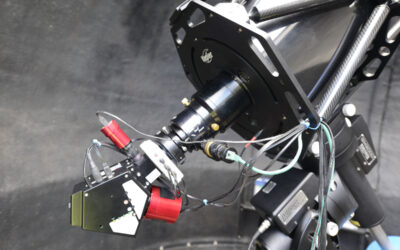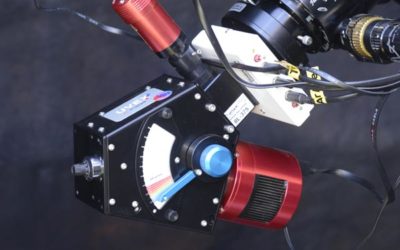You'll find all our Demetra video tutorials on this web page. Demetra is a free software package for processing spectra from the ALPY 600, LISA and eShel spectrographs from the Shelyak Instruments range. Playlist of Demetra tutorials Tutorial #1 Introduction to...
UVEX Spectroscope
5 389,20 € incl. VAT - 4 491,00 € excl. VAT
The UVEX is the most versatile instrument in our product range. Achromatic by design, it can explore far into the ultraviolet and infrared – at the very limits of what today’s cameras can achieve. The interchangeable grating allows different resolutions. Combined with its motorization module, it can be operated remotely.
Complete your spectroscope with the products below :
Additional modules
Additional modules: technical specifications
Description |
Shelyak ref. |
Acc. type |
Included |
Comment |
Guiding module |
PF0036 |
Guiding module |
To view the slit entrance during observation |
|
Calibration module |
PF0037 |
Calibration module |
For simple dark, calibration and flat images |
Grating module
Grating module : technical specifications
Description |
Shelyak ref. |
Included |
R @650 nm |
Dispersion (nm/mm) |
Blaze (nm)
|
Grating module UVEX 600t/mm |
SE0245 |
1710 |
500 |
||
Grating module UVEX 150t/mm |
SE0242 |
400 |
500 |
||
Grating mocule UVEX 300t/mm |
SE0243 |
820 |
500 |
||
Grating mocule UVEX 1200t/mm
|
SE0244 |
3800 |
500 |
||
Grating mocule UVEX 1800t/mm
|
SE0246 |
6700 |
VIS (holographic) |
Slits
Optical : technical specifications
Description |
Shelyak ref. |
Included |
Material (% reflexion) |
Mirror size |
AR coating |
Comment |
Standard slit 23μm |
SE0140 |
Chromium (55%) |
11 x 10 mm |
400 – 700 nm |
Comes with the guiding module |
|
Standard slit 23μm |
SE0136 |
Nickel (not polished) |
D = 15mm |
Real (physical)l hole, no coating |
Included with the UVEX |
|
High performance slit 23µm |
SE0247 |
protected Aluminium (92%) |
13 X 12,5 mm |
350 – 800 nm |
High performance thanks to its size, high-reflection coating and extended AR coating |
|
Photométric slit 23/200µm |
SE0145 |
Chromium (55%) |
11 x 10 mm |
400 – 700 nm |
||
Slit 35μm |
SE0150 |
Chromium (55%) |
11 x 10 mm |
400 – 700 nm |
||
Slit 50μm |
SE0151 |
Chromium (55%) |
11 x 10 mm |
400 – 700 nm |
||
Mirror slit 10μm |
SE0253 |
Chromium (55%) |
12.2 x 13mm |
400 – 700 nm |
Very narrow slit for UVEX (for use with small-pixel CMOS cameras) |
Recommended guiding cameras
Recommended cameras: technical specifications
Description |
Shelyak ref. |
Included |
Acc. type |
Cooled
|
Comment |
Caméra ZWO ASI 174 mini |
EL0244 |
Guiding camera |
No |
The ‘standard’ guiding camera, suitable for most applications |
|
Caméra QHY 174 M GPS |
EL0253 |
Guiding camera |
yes |
Cooling allows long exposures (> 30s). Can be useful for observing very faint targets. |
Recommended acquisition cameras
Recommended cameras: technical specifications
Description |
Shelyak ref. |
Included |
Acc. type |
Cooled
|
Comment |
Caméra ASI 533 MM Pro |
EL0327 |
Science camera |
yes |
Other accessories
Other accessories: technical specifications
Description |
Shelyak ref. |
Included |
Acc. type |
Comment |
UVEX Fiber Optics Connector Kit |
Rings |
To mount an optical fiber (FC connector) on the UVEX. For bench experiments, for example. |
||
Atik ring adapter for the UVEX |
PU0243 |
Rings |
To use an Atik camera |
|
QHY camera adapter ring for UVEX |
PU0244 |
Rings |
To use a QHY camera |
|
Order filter 530 nm for UVEX |
SE0248 |
Order filter |
The order filter is recommended for observations in the IR: it avoids order overlap (the second order of the blue part of the spectrum is superimposed on the first order of the IR). |
|
Argon-Neon lamps |
SE0148 |
Spare lamps |
Ar – Ne lamp |
|
Spare lamp for flats |
SE0116 |
Spare lamps |
Halogen lamp |
|
Eypiece holder for the guiding |
SE0135 |
|
Eypiece holder for the UVEX It complements the guiding module and allows guiding by eye, rather than by camera. For 1,25″ eyepiece (not supplied). |
All about the UVEX spectroscope :
Description
We recommend using the ZWO ASI533 MM Pro camera with the UVEX spectrograph.
In this article you will find a lot of additional information about UVEX.
It is particularly suitable for Ritchey-Chretien (RC) telescopes up to 400mm in diameter (F/8).
Settings are precise and easily accessible:
- A multi-turn knob adjusts the focus of the M2 internal mirror.
- Use the index to set the central wavelength of the spectrum on the camera sensor. A vernier (available for each type of grating) allows you to position the grating precisely at the desired wavelength.
The uvex is supplied with a 600 tr/mm grating blazed at 500nm and an adapter ring for ZWO cameras (other rings for QHY and ATIK cameras are also available as options).
The UVEX spectroscope slit has 6 positions that can be easily changed using a Phillips screwdriver (supplied with the UVEX). Several slit widths are available: 25µm, 50µm, 100µm, 300µm, a 25µm hole and a 3mm hole. Other slits are available as an option and Alpy slits are compatible with UVEX.
A shockproof case is supplied with UVEX. It includes pre-cut slots for safely transporting the spectrograph with its camera, as well as various accessories (additional networks, order filter, tools, etc.).
Specifications
- Cross Czerny-Turner spectrograph optical design
- Spectral range : 350 nm to 1µm
- Spectral resolution with 600 l/mm grating R=1710 @ 650nm
- Multi-position slit: 25µm, 50µm, 100µm, 300µm, 25µm hole and 3mm hole
- Optimum telescope F/D ratio: F/8 (you can go up to F/5 without vignetting, but at the cost of a slight degradation in quality).
- Compatible with ZWO, QHY et ATIK camera with a backfocus <14mm
- Dimensions : 145 x 140 mm Height = 120mm
- Weight : 1,2 Kg (without camera)
- UVEX weight+ carrying case : 3,2 Kg
Composition
- UVEX Spectroscope
- A 600 gr/mm grating blazed at 500nm
- A rigid case for safe transportation
- A tool set
- A bag of spare screws as well as 4 screws for fixing the autoguiding module on the UVEX.
- An adapter ring for ZWO cameras
- A plastic vernier for the 600 gr/mm grating.
Documents
- UVEX spectroscope brochure
- User manual
- UVEX dimensions diagram
- The various vernier boards
- Article on the UVEX by Shelyak First Light
Software
Articles related to the UVEX spectroscope:
Remote Spectroscopy – the UVEX Motor Unit
When looking to upgrade from my LISA in 2020, the UVEX had much to recommend it. Its ability to access a broad spectral range was important as was the flexibility to both adjust the grating angle and to swap over gratings to shift between low and mid resolution....
UVEX : Extreme spectra
UVEX is a multi purpose spectrograph allowing spectra to be performed in the near IR and near UV domains but also on weak targets.

